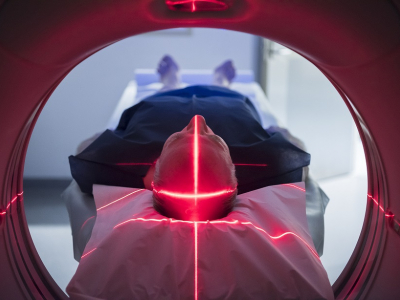Queensland public hospitals use medical equipment to help diagnose and treat patients. As technology advances, new equipment becomes available with the potential to improve health outcomes.
Replacing existing equipment and investing in new equipment can come at a high cost in terms of purchase, installation, operation, and disposal. It is important that our public hospitals manage their valuable equipment efficiently, effectively, and economically so they can continue to meet the growing demands on our health system in a sustainable way.
The Department of Health, as system manager, monitors system performance—both individual Hospital and Health Service performance and the health system performance as a whole. Its role includes promoting the effective and efficient use of available resources in the delivery of health services, which includes the funding and overall effective use of high value medical equipment. The board and management of each Hospital and Health Service is responsible for delivering efficient, effective, and economical health services within their respective establishments. Hospital and Health Services deliver health services that meet the specific health needs of their local communities, own and operate high value medical equipment, and are responsible for its ongoing management.
This audit assessed whether Queensland public hospitals are using high value medical equipment cost-efficiently and realising expected benefits. For the purpose of this audit, we defined high value medical equipment as equipment with an acquisition value of $1 million or more. We examined the process for procuring the equipment, including whether purchasing decisions addressed value-for-money considerations.
Recommendations
We recommend that the Department of Health:
1. leads a comprehensive stocktake of the high value medical equipment fleet across the health system to establish and maintain a complete, accurate register of the state’s high value medical equipment (Chapter 2).
The analysis should include a review of the completeness and accuracy of the relevant asset information systems used by the health system for financial reporting and asset maintenance.
2. investigates, in consultation with the Hospital and Health Services, options to aggregate data across the health system asset management systems in a way that provides meaningful decision support information for assets across their life cycle (Chapter 2).
3. undertakes a review of the Health Technology Equipment Replacement Program with a particular emphasis on:
- identifying the most suitable funding arrangements for replacing high value medical equipment as it becomes obsolete. The funding review should consider options for at least a 10‑year equipment replacement horizon (Chapter 2)
- identifying whether aspects of the Queensland Policy and Advisory Committee for new Technology process should be applied to the Health Technology Equipment Replacement Program process to increase transparency and rigour in how high value medical equipment replacement decisions are made (Chapter 4).
We recommend that the Hospital and Health Services:
4. develop or augment their strategic asset management plans according to the specific needs of their operational environment (Chapter 2).
We recommend that the Department of Health and Hospital and Health Services collaborate to:
5. develop guidelines to strategically plan for high value medical equipment assets, addressing key elements of the asset life cycle (Chapters 2, 4)
6. consider standardising wait list templates so all Hospital and Health Services are capturing and reporting on the same information—to enhance high value medical equipment planning (Chapters 2, 3)
7. standardise definitions for key data points (such as start and completion times) when using high value medical equipment (Chapter 3)
8. identify key baseline performance metrics for high value medical equipment so the relevant data can be captured and reported on—to identify available equipment capacity and potential system-wide improvements (Chapter 3).
